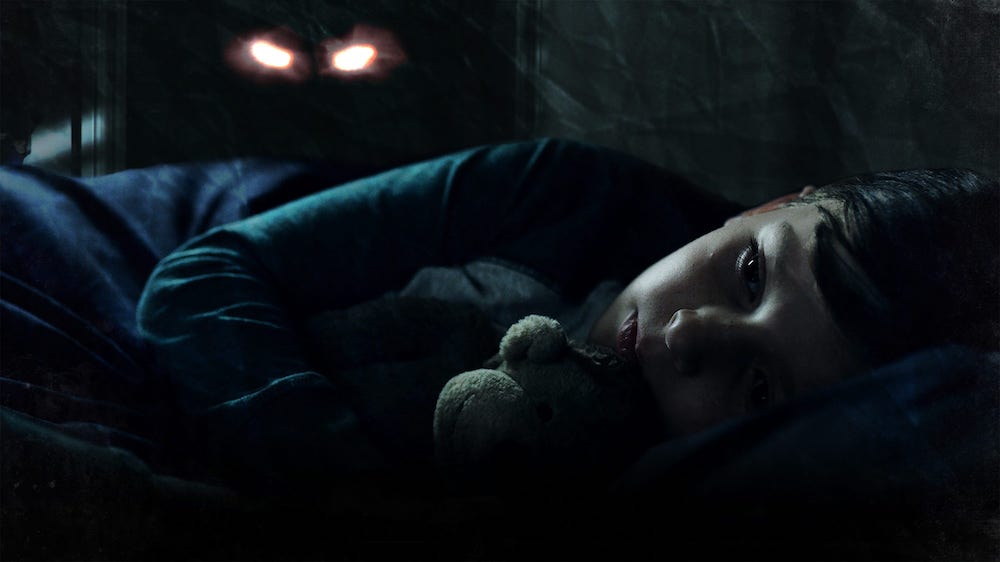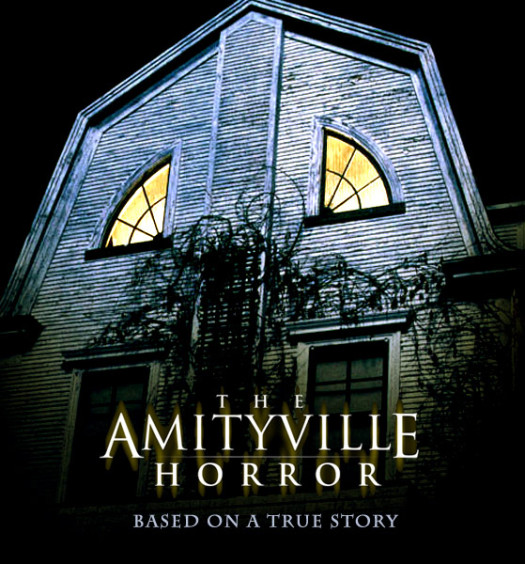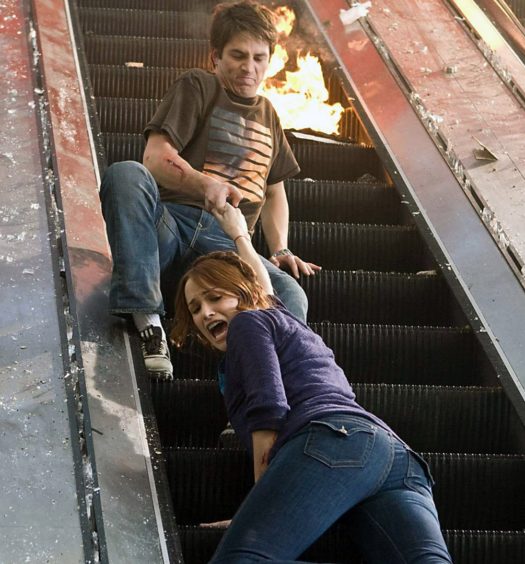With the drop of Z‘s physical media and digital release, I took a few moments to sit down with writer/director Brandon Christensen. We chatted about his latest release, Z (check out our review here), as well as his first movie, Still/Born. Both movies are available to watch right now.
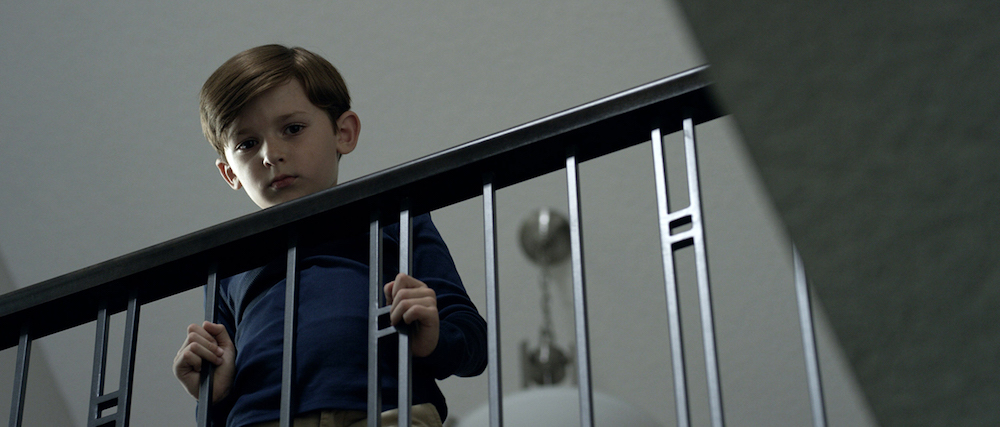
I just want people that don’t have kids to know what it’s like to be a parent, which can be a nightmare.
First, I have a two-part question for you as the writer/director of Still/Born and now Z. First is do you have kids? And second, why do you hate parents?
First question, yes I do. I have three kids. They were definitely a big part of the reason why I made these films. When we wrote Still/Born, it was shortly after my second kid was just coming out of the baby phase. I was definitely familiar with a lot of the things that were happening. The baby monitors, the lack of sleep, all those things. And then with Z, my oldest son had just started going to kindergarten, and so we were dealing with the whole thing of our our kid going away, leaving the house for the day and coming back and bringing in new ideas and thoughts and things that we had no control over. So that was a big inspiration for Z.
And as for whether I hate parents, no. But I just want people that don’t have kids to know what it’s like to be a parent, which can be a nightmare.
You have definitely captured that for sure, and I’ve talked to a lot of my other friends that have seen this and have kids, and I think they all pretty much feel the same way.
Yeah, there’s definitely a difference when you watch it. I’ve got cousins that saw Still/Born before having kids and saw it again afterwards. And same thing with Z. There’s definitely things that hit them harder when they’ve had the kid and they’ve dealt with certain things. So it’s fun to sort of build something around the knowledge that a parent might have if you know what it’s like to deal with a kid.
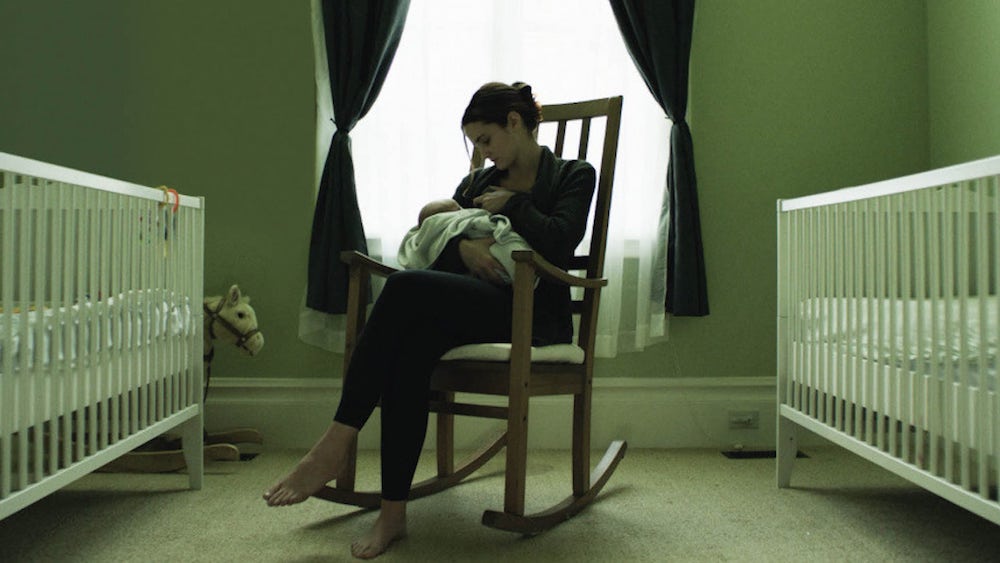
everyone’s kind of built with a psychological need to want to protect something small like that
Sure, and I think there’s a feeling that even if you don’t have kids, sometimes the shock or the terror is even more visceral when something’s happening to children as opposed to adults.
Yeah, I think so. People just have like a instinctual empathy for kids in that sort of situation. I think everyone’s kind of built with a psychological need to want to protect something small like that, so I think you definitely play on that quite a bit in these movies.
There’s a jump scare in Z that, no matter how many times I watch it, it still shakes me. I don’t want to just blatantly give it away, but it involves a kid and stairs, and it’s personally more shocking to me than anything that I’ve seen in the so-called “torture porn” genre.
Yeah, it’s the stair scare. That’s a good one. It’s funny because, when we made the film, we knew it was going to be cool, but we didn’t know it would kind of be the calling card for the film. When we did our first premiere there was just sort of an audible gasp in the audience when we did that and then I realized, “Oh OK, so that’s gonna be the thing.” After that, every time I would go to a screening somewhere, I’d always pull out my phone and stand in the back of the audience and just you know, film their reaction and there’s a couple of good ones. So it’s it. Definitely kind of became the thing in the film.
How satisfying is that as a filmmaker to see the audience connecting in that way?
It’s like the best feeling in the world because, you know, you spend like 2 years of your life trying to get to this moment where you’ve got it in front of people that are there who want to see the film. Especially when you go to a festival screening. These are horror fans, generally, ’cause they’re horror festivals and you’ve got people that are there, seeing a film early. They don’t really know anything about it. They’re a very appreciative crowd, so when you’re able to get a big reaction like that, even from like hardened horror veterans, it’s super satisfying.
It also kind of takes away from some of the weaker moments. Someone might not remember a scene that didn’t work very well. The dialogue might not be great. But they remember that impact in the moment that they felt, and that’s kind of what you’re chasing when you’re doing a film like this. You want to get that kind of like that visceral high that you get when you have that, like shock you know and you just like that reaction. So yeah, it’s like the best feeling in the world when you are able to get that from people.
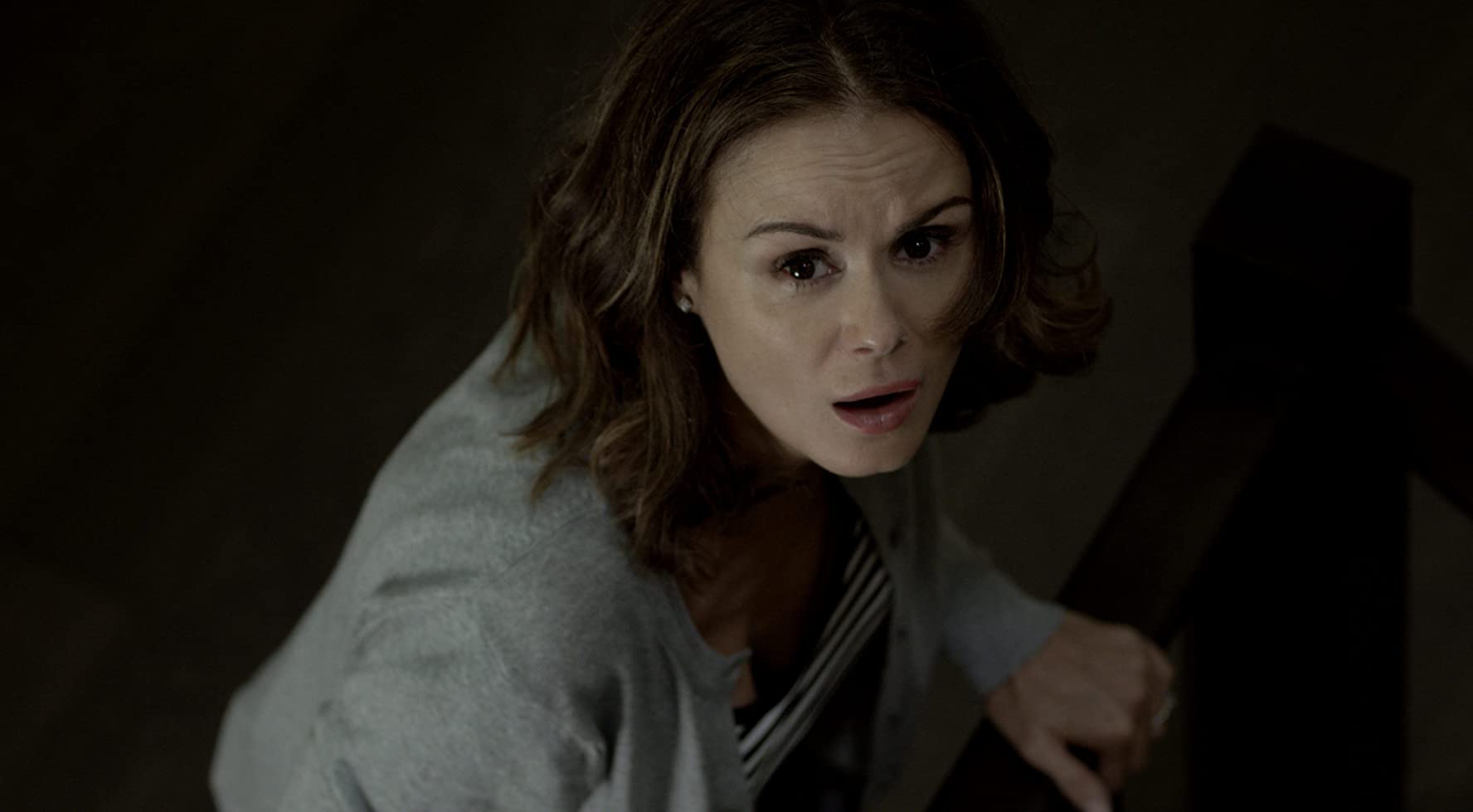
you spend like 2 years of your life trying to get to this moment where you’ve got it in front of people
There’s another theme in Z that I noticed. In the beginning, Beth and her sister Jenna, who are both sort of taking care of their elderly mother, and by the end—I won’t say which one—but you essentially end up with one of the sisters in a position where they now have to care for the other sister. There are some generational themes there that you’re also playing with and thinking about without with this film.
Yeah, I mean I think with with the nature of Z—not the film itself, but the character in the film—there’s definitely some parallels of what’s going on, uh, in the present and what happened in the past. I think that, you know, it’s definitely talking about the idea of generational trauma and just sort of reliving past trauma and abuse. And the whole thing with the sisters, it’s almost like one is more protective. One’s got their shit together, and they’re the one who’s taking care of the mother, and the other one is not doing so much. Then you have a role reversal where you have a character experience trauma, and they have to sort of step up to the plate and get their stuff together and be responsible.
I think that it kind of talks about the strength that you can get from a horrifying scenario. If you think, “Oh man, if this person died, I would never be able to handle it.” But then when you actually deal with that, you find that you are a lot stronger than you thought you were. So you’re able to to handle it because you’re in it. It’s not, like, a hypothetical. It’s just what it is. So I think it’s definitely talking about that a little bit too.
Another interesting thing that you’re doing here, differently than, say, in The Conjuring is that both of your first 2 movies have ended on a much more somber note.
Well, there’s kind of two different ways that you can end a horror movie nowadays … I mean, mostly. There’s kind of the F-U ending where it’s like, you know, you set up a happy ending and then you just get the rug pulled out from under you. I think you can go back to Friday the 13th. There’s a serene moment on a boat and all of a sudden you get overtaken by Jason.
I think when you’re dealing with themes like grief and, uh, mental illnesses and stuff like that, there isn’t a lot of fun to be had. You know, you do get some character growth from certain people, but they just went through a really traumatic experience and I think that the effects of that are going to linger on in these people’s lives. If you have characters that are forgetting something or ignoring something from their past, then all of a sudden being forced to face it, you will definitely come out the end stronger, but you’ll have changed at the same time. So, yeah, it’s definitely tough, especially in Z because of the end point that film. It’s a very big bummer, for sure.
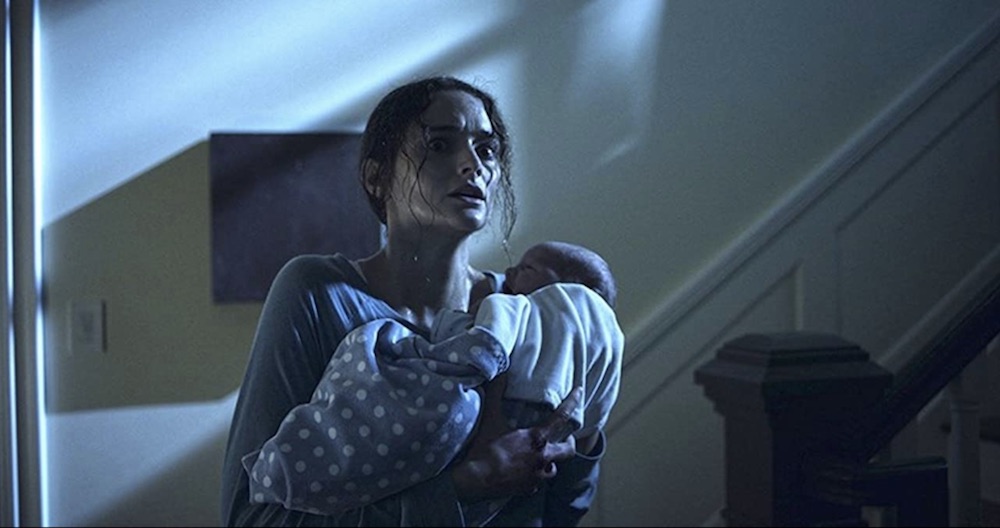
there’s not a lot of happy endings in real life
One of the things that I also like about your endings is they’re very realistic. I mean they feel sort of natural to the world. Maybe it’s not the only way that a story like that could end, but if you were reading about it in the newspaper or something and it ended that way, it would make sense to you, I think.
Yeah, I think so. I mean, as long as the characters are sort of staying true to themselves, you’ve got some latitude of where you’re going. Where Beth and Jenna and Josh all end up in the film, I think, uh, makes sense from a narrative perspective. It’s sort of like you create this new normal that you can look at and say, “Yeah, I guess that makes sense.” It’s not a happy ending, but people have to deal with this stuff. You know, there’s not a lot of happy endings in real life.
In both of your first two movies you’ve got these veteran character actors in key roles with Stephen McHattie in Z, and then Michael Ironside in Still/Born. What was it like working with those guys?
Uh, yeah, it’s really interesting, because in both cases when we started production, we didn’t have those roles cast. We thought we did in Still/Born. And then, you know, we came to production and that actor got picked off by a a Marvel franchise. So Michael Ironside came on board, you know, in the middle of the shoot. Colin, the producer, whispered in my ear, “Hey, we got Michael Ironside for the role.” And, as a first time director you just, like, crap your pants. You’ve got this larger than life character actor that’s been around since you were born.
And so everybody’s on their best behavior when these people come on set. There’s just like a reverence because everybody knows who they are. So it was really great. In Ironside’s case, he just kind of came in and was larger than life but super friendly at the same time. Just so welcoming and easy to work with and everything. And you know the same thing with Stephen McHattie. He comes on, and there’s just like a “this is a real movie” feeling when you have these people on set because they’re faces and names that you recognize.
It’s fun to watch them work because they’ve been doing it for so long. Then you kind of learn as a director how to work with them because the way that you work and the way they they work might be totally opposite. So you have to kind of find that balance. But yeah, it’s cool. I mean, it’s nice to have that presence in the film. When you see him you’re thinking, “Oh wow, this is legit. I gotta listen to this character because, you know, obviously they’re important ’cause I know this person.”
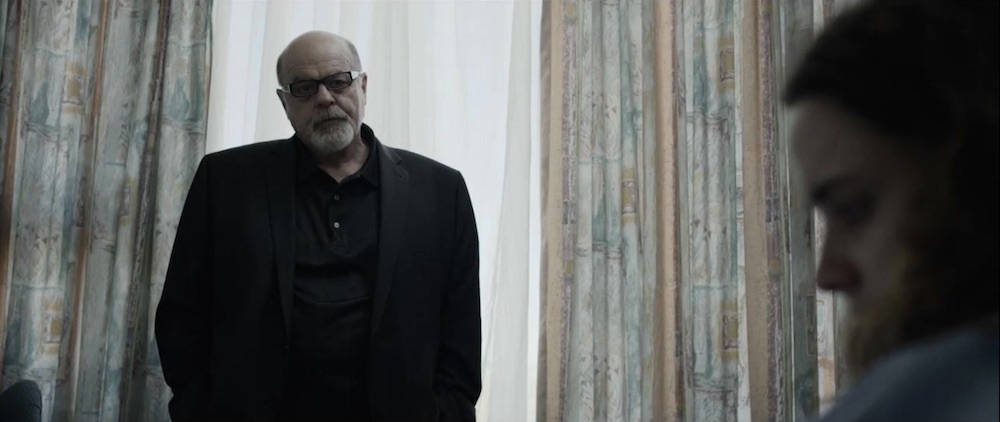
You’ve got this larger than life character actor that’s been around since you were born.
In addition to your features, you also work as a VFX artist with impressive credits, such as VFW, Bliss, The Pale Door, and Seventh Day. What’s it like to come on board and work on someone else’s movie after having put out your own features as a director?
So I kind of got into this because I did my own features, and I had to learn because we didn’t have money to pay people. So a big part of it was just sort of figuring out what I could do and then, you know, putting that into the film. And then Josh Ethier, producer and editor of VFW and Bliss, reached out because they had some shots for Bliss. So I took them, and it was kind of my first job as a VFX artist that wasn’t from my own work. And that led to VFW which was shortly after that and it just sort of introduced me to new people who brought me on to their films. It’s kind of just been a process of figuring out things as I go along.
But it’s not just the technical things. There’s a lot of story-related reasons for VFX. Like if you watch Z, you’ll see some showy VFX—like the fire and stuff like that. Whether or not that works for you, that’s a different thing. But there’s 180-something VFX shots in the film that you’ll never notice because it’s there to either fix something or help the story in a certain way. I think that the big VFX that matter the most are just what can you do to help the story a little bit more. So, I think, when you’re talking to a director and it’s not something like, “Oh, we need to paint out this car in the background.” It’s more like, “You know, we need this shot to be combined with this take.” The more important ones you’re able to connect with the director and put in your own input. Some directors can’t do the VFX. They don’t really understand that you can kind of manipulate the story.
Personally, it’s a huge tool. You can use VFX to create something that’s not there. There’s a scene in Z later on in the film with a bunch of toys going off, and we shot it in a really bad way that didn’t look good at all. I was actually able to take different scenes from in that same room and flip the scene around and chang everything—like where the lighting was coming from. All this stuff, just to make it more cinematic, and it helps the scene out tremendously. Like, if I had to use the stuff that we shot, it never would have worked. So yeah, it’s just sort of another tool that you can use to help the film along. It’s not always about really showy special effects.
Look at David Fincher, he’s kind of the the best at this. You’ll watch the behind the scenes of Zodiac and it’s unbelievable how much VFX is happening in that film that you’re never going to notice. Because they’re not showy. They’re just there to create a sense of place or fix certain things to make it feel authentic. It’s not about what you see, it’s about what you’re not seeing. So I think yeah, they don’t get the credit they deserve. You know, the giant Marvel films that have the very showy special effects usually get the accolades because the VFX are what you’re watching. You know, you’re watching the spectacle. Whereas in an adventure film or something like Z, it’s not about that at all. Like, you don’t want to notice the VFX ever. So if you do, you failed.
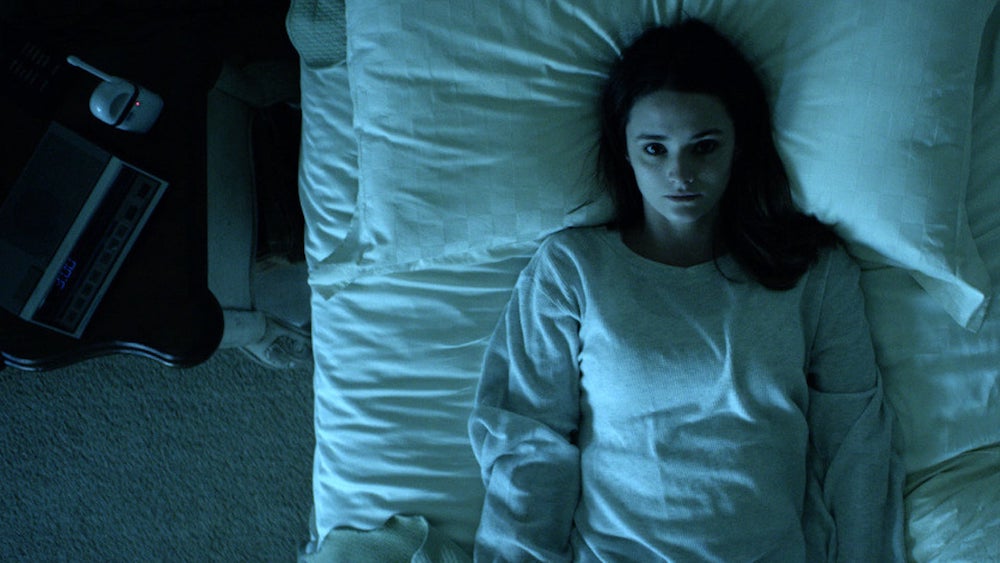
there’s 180-something VFX shots in the film that you’ll never notice because it it’s there to either fix something or help the story in a certain way
So, sort of bringing things back to Z, let’s talk a little bit about about the design of Z, the character. There’s a giant painting of him in black paint, which is one of the more terrifying designs that I’ve seen in awhile.
That’s always very challenging when you’re an indie because you don’t have money to pay a concept artist to say, “Come up with Z” and then you go to lunch and you come back and they’ve got Z for you. So in this case, it’s people asking me what to do and your just kind of struggling to figure it out. And you’re like, “Oh he’s gonna be tall. He’ll be skinny, he’ll be scary.” You know, just these very generic things that you’re describing. And then you start looking out to people that you could cast. And you find someone like the guy that we got [Luke Moore] who is very tall and skinny and can do some interesting things with his body. And you start thinking like, “OK, maybe we can use that.” And so you’re just coming up with these ideas.
The big thing we wanted to focus on was him having a big smile because, even though it’s scary looking, you can’t have it be too scary looking or else a kid wouldn’t want to play with it. So that was kind of the big key too. And then when we were filming, the first or second day on set, Britney Allen sent a charcoal drawing—the one that you see in the film—and it was just kind of like, “Oh wow, like that’s really interesting.” It’s too good for an 8 year old to draw, but maybe we can use this as a starting point, and then as we you know we finished production, we started post and we took her drawing and put it on the wall. So it just became like one of those things like, “Yeah, this is the drawing. We’ll fix it later.”
Later comes and you never fix it, and it ends up working out awesome because you kind of remove yourself from the fact that an 8 year old drew this. It’s no longer about that, and it kind of gives it its own life. And it became kind of a big marker for the film that people talk about. So it’s funny to just sort of step back and let the artists do their work. She made a great drawing, and it end up working perfectly.
The actor who plays Z, Luke Moore, shows up a handful of times throughout the movie. How much of what we see is the actor, and how much of is prosthetics and post?
He had prosthetics on his face. There were two. There was a closed smile, and then there was an open smile with all these big teeth. And that was kind of the idea. It’s like he’s smiling because he’s pretending to be friendly, but he’s really just straining back this mouthful of piranha teeth. That was kind of the the idea going into it. It kind of lost that in that it didn’t really become that big of a deal in the film itself, but he looked more like what you see on camera. That’s him. We did some VFX stuff like in the bathtub, for example. His eyes were made to look bigger. He was made to look very sweet and innocent there. So you have this childlike wonder to his face, and I think that juxtaposes with the setup. The candles, the water, the darkness, all this stuff gives it this very kind of odd and off-putting feel so that you see when you do see him, I think that works really well.
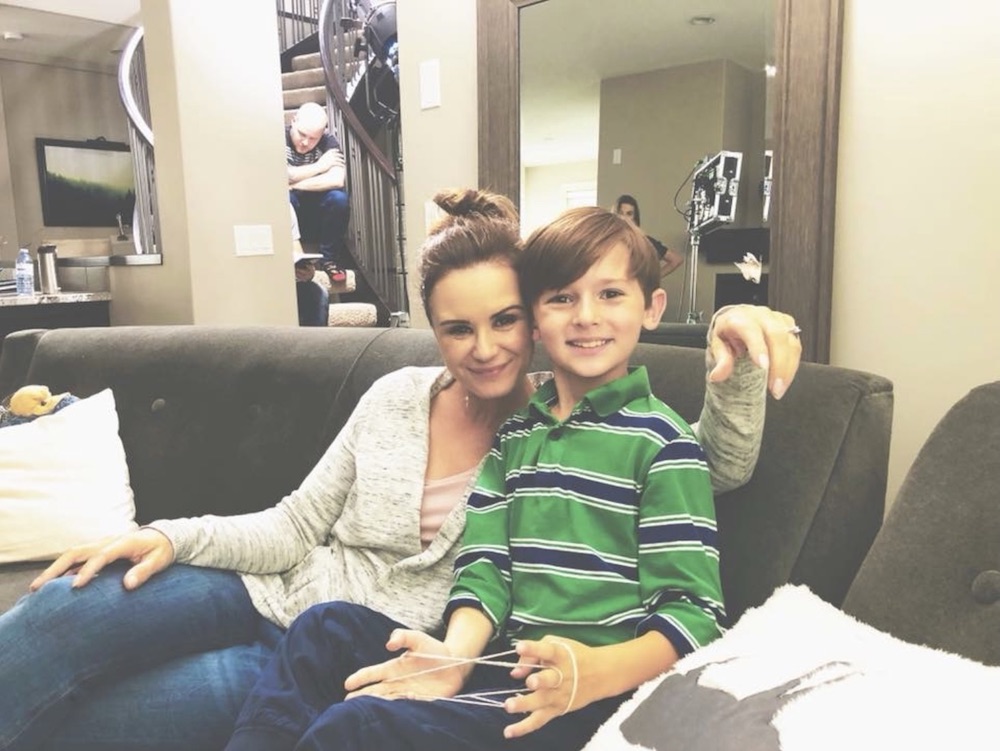
he looked more like what you see on camera
That is another really effective scene, and I always wondered why, you know, in the bath is when I’m going to try to imagine this character. I’m not sure, but it definitely is a very, very effective scene and really accentuates the film.
Yeah, I think I do most of my best thinking in the bathtub, so that’s probably where that is. Just like it’s getting to a dark place that’s common and I can just sort of be alone with my thoughts. And then I can try and figure out if I can see this thing. And, it’s just super cinematic, so that’s a big that’s always a big part of it.
So Z is already out on DVD, Blu Ray, and on demand. It has also been available for awhile now on Shudder. So by all means go check it out or go pick yourself up a Blu Ray. Brandon thanks, thanks very much for joining me.

